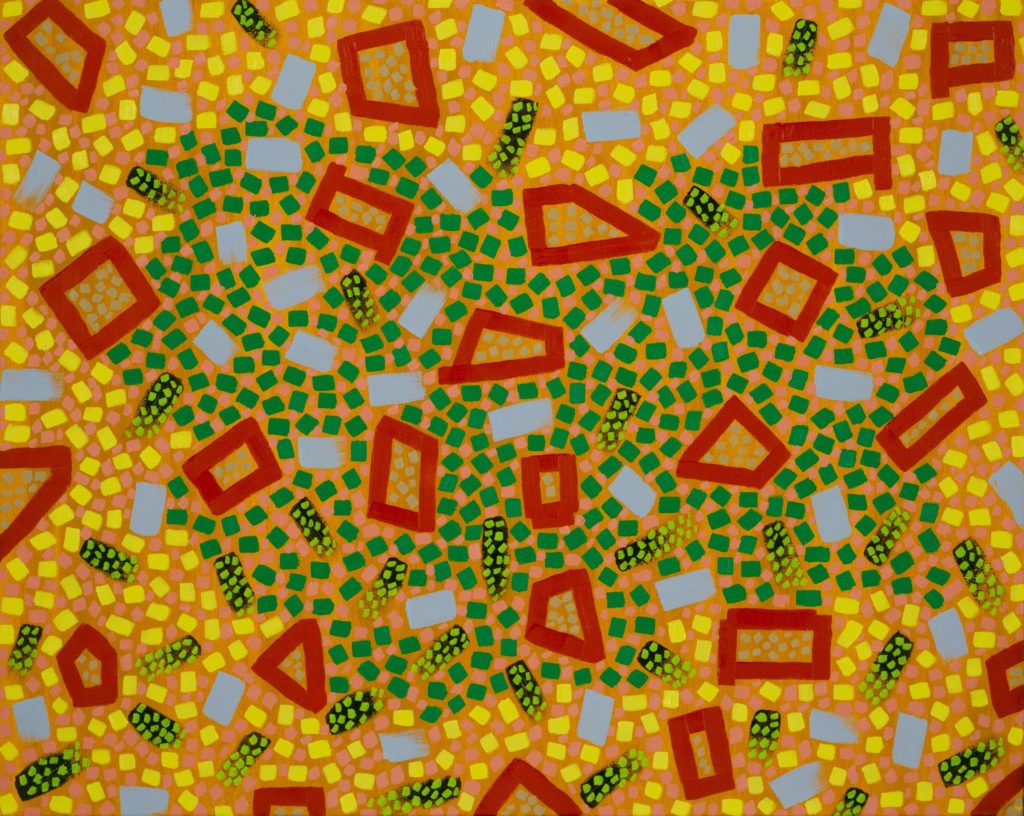Dyslexia
Size (h w d): 24 x 30 x 0.75 in
Medium: oil on canvas
This is the whole story as a follow-up to my Instagram post.
When I was a young lad going to elementary school in Crestline, California, it became painfully apparent that I had difficulty reading and especially spelling. Back then teachers almost always assumed that you were adel. No one really understood what dyslexia was and how it impacts learning. As a life-long dyslexic I learned to overcome the challenges, and to this day I am prodigious reader. But when it comes to my spelling, I never have really become proficient in spelling.
So what does this have to do with being an artist? As I matured and researched who in this world is dyslexic, I come to find out that people from Steven Spielberg to Picasso. Google “People that are Dyslexic” and you will be amazed. The key to virtually all dyslexics is that they think mainly in pictures instead of words. You remember more about what you see than what you read. We have a tendency to create picture stories in our minds to associate with various experiences in our lives. When I think about creating a painting they just simply manifest in my brain, and then once the brush hits the canvas, it all just seems to come alive. Even while I am painting, picture stories continue to evolve.
If you are an artist with dyslexia, you need to understand that dyslexia is not a disability it is a gift. For Albert Einstein it was Physics, for Walt Disney it was Art, for others it was athletic prowess.
There are several abilities that people with dyslexia share and you can quickly see how these can become an asset to any creative person, especially painters.
1. They can utilize the brain’s ability to alter perception.
2. They are highly aware of the environment and everything that is going on around them.
3. They quickly observe creative feedback from environments such as color, texture, sound and smells.
4. They think mainly in pictures instead of words.
5. They are highly intuitive and insightful.
6. We dyslexic artists think and perceive multi-dimensionally. In other words using all of our senses.
7. We can experience our thoughts as reality (could be a little dangerous).
8. And best of all, artists with dyslexia are for that matter, anyone with dyslexia has a very vivid imagination.
When people ask me where I get my inspiration from, I simply say, “I paint what I see, and what I see reveals itself in my brain. I try to avoid any outside influences. One of the advantages of being dyslexic is your ability to use your imagination and take road trips within your brain and discover shapes and how they can be juxtapositioned into profoundly interesting images.
Many artists and creative people throughout the world seem to share Dyslexia. Most artists understand that this is a true blessing for the creative mind. The very nature of the condition opens up interesting pathways into the brain generating a creative force that can be immensely profound. This painting is my attempt to allow the observer to look into the dyslexics thoughts.
I would love to know from my fellow dyslexians how this wonderful gift has impacted your world of art. You can email me here. And if you are one who does not have this gift, do a Google search, it may help you better understand a child with dyslexia or anyone with dyslexia. If you are school teacher you especially need to understand the mind of a dyslexic child. You can guide them and help them avoid feeling that they are not smart.
